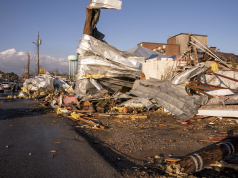By Samuetta Hill Drew
During the age of COVID-19 where face coverings such as masks are a growing requirement, properly wearing and maintaining your mask is important.
The Centers for Disease Control and Prevention (CDC) tells us that wearing a mask does not raise the carbon dioxide (CO2) level in the air you breathe. Cloth masks and surgical masks do not provide an airtight fit across the face. The CO2 escapes into the air through the masks when you breathe out or talk. CO2 molecules are small enough to easily pass-through mask material. In contrast, the respiratory droplets that carry the virus that causes COVID-19 are much larger than CO2, so they cannot pass as easily through a properly designed and properly worn mask.
This is why properly worn, and maintenance of your mask is important. As the previous article stated masks should fit snugly over the nose and mouth and under the chin and that there are no gaps around the side. If you wear a gaiter, make sure it has two layers, or folds to make it two layers.
Unfortunately, we all have seen individuals who have a mask on, but it either is not fitting properly or they are not wearing it properly, for whatever the reason. It is essential that you wear your mask correctly and consistently for the best protection. Below are some recommendations by the CDC of dos and don’ts on how to properly wear your masks:
• Be sure to wash your hands or use hand sanitizer before putting on a mask.
• Do NOT touch the mask when wearing it. If you have to often touch or adjust your mask, it doesn’t fit properly, and you may need to find a different mask or make adjustments.
• Do not wear your mask around your neck.
• Do not wear your mask on your forehead.
• Do not wear your mask underneath your nose.
• Do not wear your mask only on your nose leaving your mouth unprotected.
• Do not wear your mask on your chin or dangling from one ear.
When removing your mask, carefully untie the strings behind your head or stretch the ear loops. Handle you mask only by the ear loops or ties and fold the outside corners together. Make sure you do not touch your eyes, nose, and mouth when removing your mask. Wash your hands immediately afterwards.
Knowing how to properly clean your mask is another safety step in proper maintenance. A reusable mask should be washed whenever it gets dirty or at least daily. If you have a disposable face mask, throw it away after wearing it once.
Always wash your hands after handling or touching a used mask. You can include your mask with your regular laundry. It is fine to use regular laundry detergent and the appropriate settings according to the fabric label. If you prefer to wash your mask by hand, use tap water and laundry detergent or soap. Rinse thoroughly with clean water to remove all the detergent or soap. Dry your mask completely in a warm or hot dryer. Masks can be hung in direct sunlight if you wish.
When your masks are clean, store them in a dry, breathable bag such as paper or mesh fabric bag. This helps Keep an Eye on Safety for your masks until it’s time to wear your mask again.




